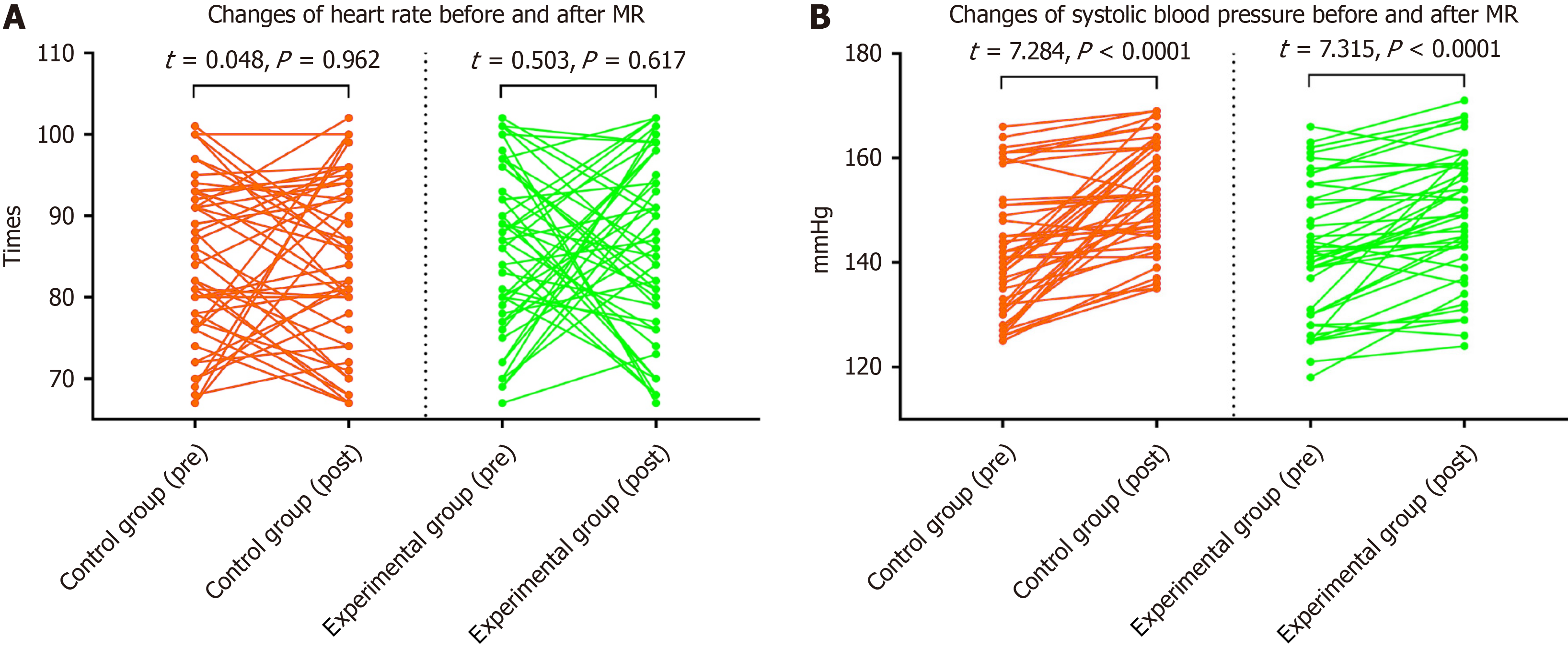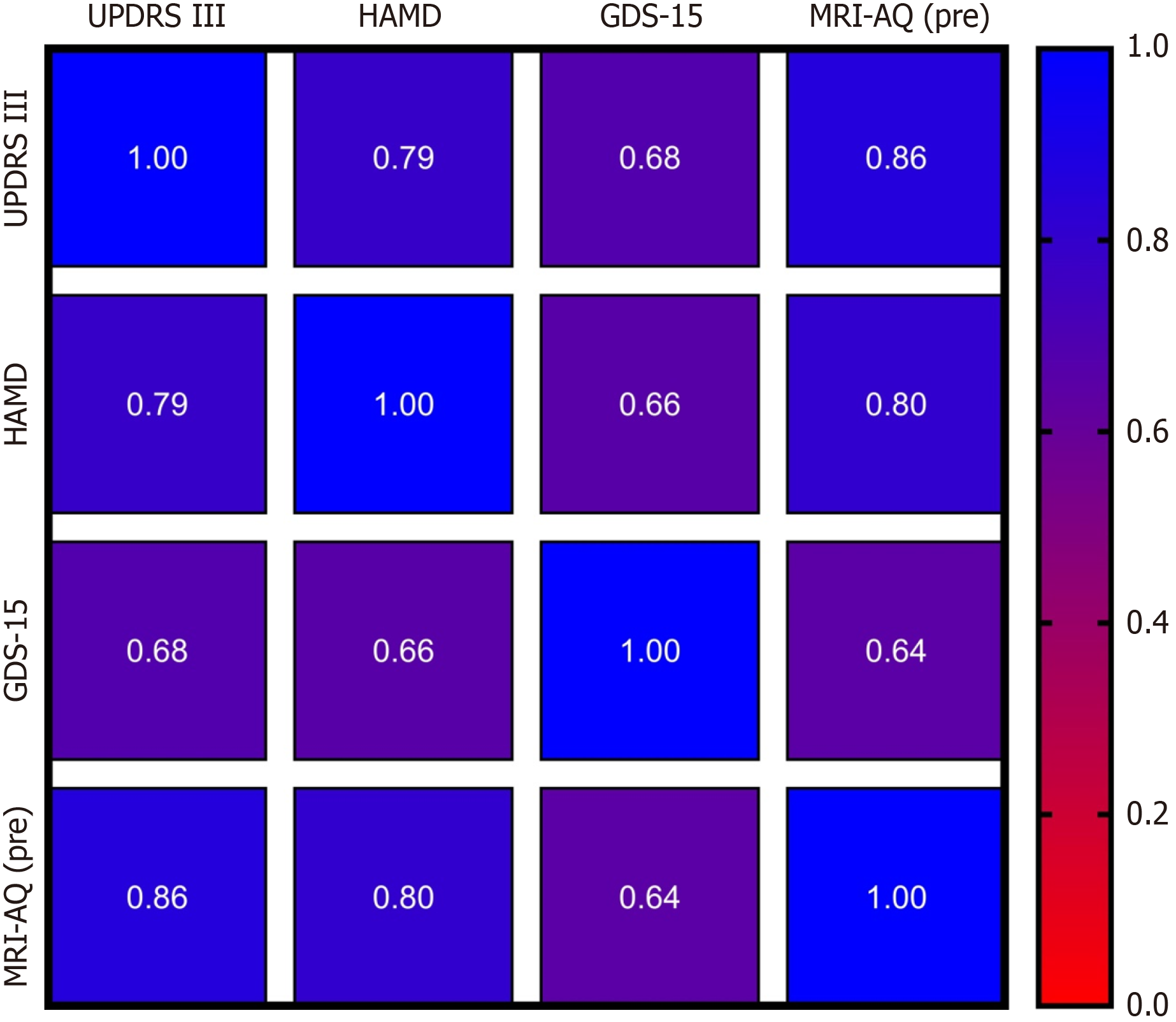Copyright
©The Author(s) 2024.
World J Clin Cases. Jun 16, 2024; 12(17): 3086-3093
Published online Jun 16, 2024. doi: 10.12998/wjcc.v12.i17.3086
Published online Jun 16, 2024. doi: 10.12998/wjcc.v12.i17.3086
Figure 1 Comparison of changes in heart rate and blood pressure before and after magnetic resonance imaging scanning.
A: Comparison of heart rate before and after magnetic resonance (MR) scanning. No statistical difference was observed between the both patient groups; B: Comparison of systolic blood pressure before and after MR scanning. Systolic blood pressure of both patients after scanning is higher than that before scanning, with a statistically significant difference.
Figure 2 Comparison results of magnetic resonance imaging anxiety questionnaire before and after magnetic resonance scanning.
No statistically significant differences were observed between the control and experimental groups. After scanning, the magnetic resonance imaging anxiety questionnaire score in the experimental group was significantly lower than before scanning. MRI: Magnetic resonance imaging; MRI-AQ: Magnetic resonance imaging anxiety questionnaire.
Figure 3 Correlation between various anxiety scores.
MRI: Magnetic resonance imaging; MRI-AQ: Magnetic resonance imaging anxiety questionnaire; GDS: Geriatric Depression Scale; HAMD: Hamilton Depression Scale; UPDRS: The Unified Parkinson's Disease Assessment Scale.
Figure 4 Difference in scanning time and image quality scores between both patient groups.
A: The scanning time of the experimental group patients was significantly shorter than that of the control group, and the difference was statistically significant; B: The image quality score of the experimental group patients was significantly higher than that of the control group, and the difference was statistically significant.
- Citation: Zhang XX, Zhang XH, Dong YC. Effects of psychological nursing in Parkinson's related depression patients undergoing functional magnetic resonance imaging: A randomized controlled trial. World J Clin Cases 2024; 12(17): 3086-3093
- URL: https://www.wjgnet.com/2307-8960/full/v12/i17/3086.htm
- DOI: https://dx.doi.org/10.12998/wjcc.v12.i17.3086












